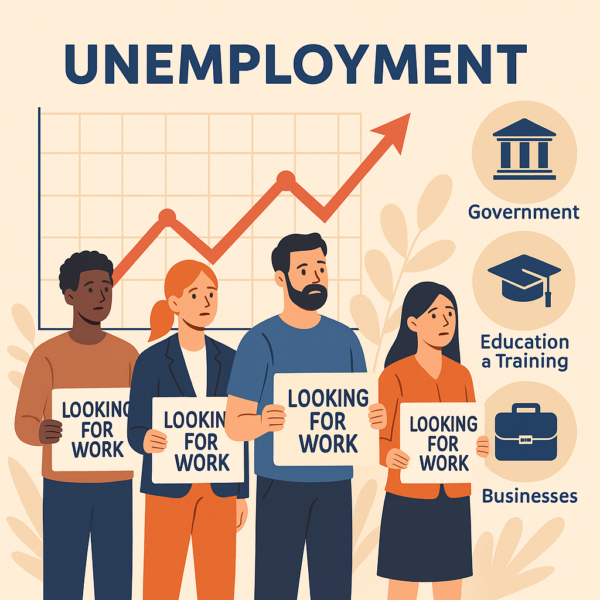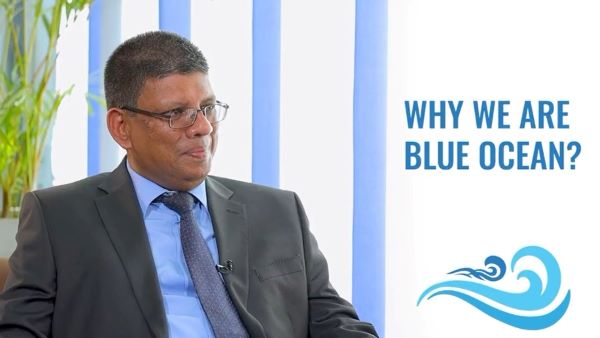Macroeconomic Indicator – Unemployment – By Dr. Gnana Sankaralingam


Level of unemployment is the number of people who are looking for a job, but cannot find a full time one. Rate of unemployment is the number of people out of work as a percentage of the labour force, which is used when making comparison between countries. Unemployment comes at a cost to the economy as a whole and governments want to keep a track of unemployment figures. High rate of unemployment suggests that an economy is doing badly. It will lead to lower incomes and less spending. This might have an impact on the companies as they may sell fewer goods or may need to cut prices and make less profit. Unemployment means that there is unused labour in the economy, where fewer goods and services can be produced. It also means that the governments have extra cost to meet such as welfare benefits and gets reduced revenue as less taxes could be collected.
There are two ways of measuring unemployment: First is the claimant count where number of people claiming unemploymant related benefits from the government are counted. Advantage of this is that data is easy to obtain and there is no cost in collecting the data as it is recorded when people apply for benefits. But governments might manipulate it to make it smaller and also exclude those who are looking for a job but choose not to claim benefits. Second is labour force survey where a sample of the population is used to find out from the people and total up the responses to calculate the unemployment count, which is thought to be more accurate than claimant count. This is an internationally agreed measure so it would be easier to make comparison with other countries. But it is expensive to collect the data and sample may be unrepresentative of the people, making it inaccurate.
Governments aim for full employment where everyone of working age could find employment at the current wage rates. Full employment does not mean that everyone has jobs, as in most economies there will be people between jobs. Governments want full employment as this would maximise production and raise the standard of living. If there is unemploymant in an economy, it will not be operating at full capacity. Underemployment is when someone has a job, which does not utilise the skills or expertise of that person to the full effect. It is also where one could find only part time employment when actually wanted a full time position. Employer’s demand for labour is derived from consumer’s demand for goods and services. When there is negative economic growth demand for labour is low and unemployment will rise, but if there is positive economic growth demand for labour is high and unemployment will fall. Unemployed would have lower incomes which mean that they will spend less which could reduce profits of the firms. Income tax revenue will be less and as consumer spending will be less, indirect tax revenue would be reduced and government has to spend more on welfare benefits. In areas with high unemployment crime rates may be high and due to reduced incomes, there may be health problems. Workers who are left unemployed for long time may find their skills and training become outdated.
There are different varieties of unemployment: Cyclical, Seasonal, Structural, Frictional and Real Wage. Cyclical or demand deficient unemployment commonly happens when the economy is in recession where the economy is underperforming as some of the resources including labour will be unused or underused. This results in negative output gap (when actual output is below trend output) and the country is likely to have unemployment. Seasonal unemployment occurs because demand for labour in certain industries will not be the same all year round such as tourism and farming which have peak seasons where need for labour is much higher than other times. Structural unemployment is caused by a decline in a certain industry or occupation commonly due to consumer preferences or technological advances or availability of other cheaper alternatives. It often affects region with traditional manufacturing industries and is worsened by labour immobility, where workers do not have the skills to do other available jobs or to move to other regions where jobs are available, as either they have family ties or cannot afford to translocate. Frictional unemployment is that experienced by workers in between leaving one job and starting of another. Length of time people spend looking for job depends on several things. In a boom number of job vacancies are higher and so it is likely to be short term, but in a slump it may take longer as there will be shortage of jobs. Real wage unemployment is caused when are wages are pushed above the level where demand and supply of labour is at equilibrium. This is often caused by trade unions negotiating for higher wages. Demand for labour would increase due to increase in productivity or rise in consumer spending which could reduce unemployment.
Natural rate of unemployment (NRU) is the rate when the labour market is in equilibrium (demand and supply of labour is equal), which means that there is enough jobs for every worker in the labour force, but that does not mean that every worker will be in a job. NRU can be seen to correspond to full employment as it is not possible for everyone in the workforce to have a job. To reduce unemployment, governments need to understand what type they are trying to tackle. During recession government would need to introduce policies that boost aggregate demand using inflationary fiscal policies like decreasing taxes and increasing welfare or using expansionary monetary policies like lowering interest rates. To reduce NRU, governments need to use methods that make labour market more flexible which is determined by three factors: Labour mobility (ability to switch jobs easily) which would depend on how skilled the workers are and their willingness to move to where the jobs are; Wage flexibility (ability of wages to change with changes in labour market) like in recession employers could lower wages to avoid laying off workers; Flexibility of working arrangements (ability of employers to hire workers in a way it suits them) such as in shift basis, part time or short term (zero hour) contract which makes it easier and cheaper for firms to hire and fire workers in response to changes in the market. Policies in improving labour market flexibility focus on improving labour mobility such as investing in training schemes to help workers to improve their skills or giving subsidies or building affordable houses for workers to move to areas that need them. Governments can limit trade union power to improve wage flexibility and working arrangements can be improved by passing laws that make it easier to hire workers on a flexible basis. Income tax cuts would be an incentive for workers to find new job or encourage them to work longer hours.




















